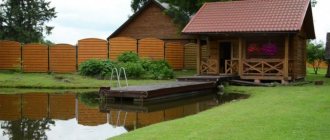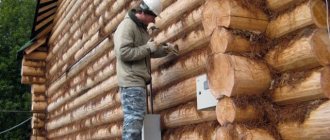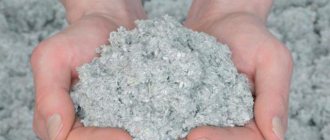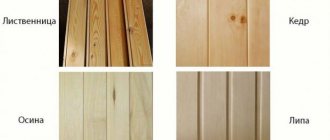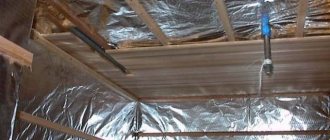- From timber
When setting up a steam room, it is very important to take care of the quality of its thermal insulation. Therefore, today we will tell you how to insulate walls in a bathhouse from the inside. Let's consider what materials to choose depending on the nature of the structure, what technology is used to lay them and the rules followed. Let us immediately note that it is ineffective to carry out such work outside the building, no matter what it is made of, timber, concrete or brick.
Advantages of internal insulation
- Reduces fuel consumption (either solid fuel, such as wood or coal, or gas) and reduces heating time.
- It is the key to the desired microclimate in the steam room. You will forget about drafts, dampness, cold, and you will be able to feel comfortable in any season.
- Ensures proper circulation of hot air, preventing condensed moisture from settling on various surfaces of the rooms. Thanks to this, the cladding remains dry, resists mold and fungi, does not rot, does not deteriorate longer and looks beautiful in a new way.
More about vapor barriers
The most successful vapor barrier option for all sauna rooms is aluminum foil. It is fire-resistant, durable, non-hygroscopic. The main advantage of aluminum foil is its ability to reflect heat. By using such a vapor barrier in a bathhouse, you can significantly reduce the consumption of fuel material.
Glassine and roofing felt cannot be used in the steam room, since these materials, when heated, emit volatile toxic substances. In some cases, glassine can be used as insulation. It is better not to use roofing material for this purpose at all.
Which insulation is better depending on the type of building
When choosing insulation for the walls of a bathhouse, it is important to consider what material it is built from.
From timber
In the case of a durable type of wood and a relatively large cross-section of each element of the frame, it is enough to simply caulk the cracks and treat the walls with impregnations against fungus and mold, as well as compounds that protect against moisture and fire.
In other situations, all rooms (especially the steam room) must be insulated with basalt wool - in one layer, using the “Pie” technology (we will consider it separately below), additionally laying foil material to minimize the harmful effects of steam.
Made of brick
It freezes quickly in the cold season. This means that measures need to be taken to ensure that a suitable microclimate inside is maintained even in the harshest winter. To do this you can:
- install second walls around the entire perimeter;
- or make a double thermal insulation layer.
To create the sheathing, it is better to use wood rather than metal, since the latter gets very hot during operation. Naturally, it is recommended to treat the prepared structure with agents against fire, rotting, and insects.
Made from concrete
In this case, you can insulate the walls in the steam room of the bathhouse from the inside and outside. Such a serious approach will result in the absence of problems with the masonry getting wet (due to condensed steam), and will become a measure that effectively prevents rapid destruction.
Here the craftsman upholsters the surfaces in the room with 10 cm thick mineral wool (or an analogue suitable in structure), and from the street he arranges a hinged ventilated facade, that is, he fixes the same basalt sheets and covers them with clapboard or siding. The method is relatively expensive, but it guarantees the correct microclimate.
Made from expanded clay concrete blocks
Here you will also need moisture-resistant material, but in combination with high-quality hydro- and vapor barrier. Plus, it is worth installing additional ventilation - this will help level out the increased level of humidity. It is quite acceptable to lay foil tape in as thin a layer as possible.
Video description
All of the above points have already been taken into account in standard bathhouse designs. What they are, see in the following video:
Hire a specialist or do it yourself
How to insulate a steam room in a bathhouse: a comparison of options for hiring an experienced professional and working independently.
The main advantages of building a bathhouse and insulating a steam room with your own hands:
- Saving money for paid labor, or rather for its absence. After all, all the work is done by the owner himself.
- Total control, from the purchase of materials to installation, again due to the fact that everything is done independently without the involvement of third parties and organizations.
The main disadvantages of DIY construction:
- Time. Without working skills and not knowing design standards, it will take a lot of time to study this issue.
- Speed. The work that a specialist can do in a matter of hours, an inexperienced person will do for several days, so that the quality is at a high level.
- Inflated prices when purchasing materials. As a rule, when purchasing materials in bulk, you can save up to 50% of money. This is what organizations working on a turnkey basis take advantage of, purchasing material for several objects at once.
Mineral wool is used to insulate steam room walls, lining is used as a facing material Source banyaportal.ru
Beauty is in the little things
As a rule, making a steam room in a bathhouse beautiful is not as difficult as it seems at first glance. The interior decoration of the walls, ceiling, floor, arrangement of shelves and lighting elements are primarily responsible for presentability in the steam room.
To finish the walls, ceiling and floor, lining of different types of wood is used. You can also combine wood finishes with tiles and stonework.
An example of finishing a steam room No. 1 Source brodude.ru
How to properly insulate the walls of a bathhouse from the inside
First, let's talk about the general principles. According to them, the greatest attention should be paid to the key rooms - the steam room and the wash room. All calculations - the quantity and volume of components - should be carried out with a reserve, that is, taking into account rough consumption. It is better to immediately refuse cheap impregnations, compositions, solutions - this is the case when it is better to spend money, but make a decision for the long term, because if repairs are needed soon, you will overpay much more than you saved.
When choosing a material, you need to choose one that has the following characteristics:
- non-toxic and environmentally friendly;
- low hygroscopicity;
- resistance to high temperatures and steam;
- the ability to maintain shape for a long time and restore it after physical stress;
- fire-fighting properties.
Video description
The insulation of a bathhouse from the inside is clearly shown in this video:
Insulation materials
There are many thermal insulation materials on the market that are suitable both for insulating a steam room and for insulating other buildings. Therefore, among them it is worth highlighting those that are suitable specifically for interior work in a bathhouse.
It is worth paying attention to the following characteristics:
- increased fire resistance;
- low thermal conductivity;
- resistance to damage by rodents and insects.
Mineral wool is most often used; it not only meets all of the above properties, but is also easy to install, which is important when faced with the task of making a steam room in a bathhouse with your own hands.
There are no special requirements for waterproofing films. But with regard to vapor barrier - yes. Aluminum foil is a cost-effective option, both in terms of cost and installation work. In order for the foil to work correctly, it is necessary to properly insulate the room by gluing all joints with aluminum tape.
Sources of heat loss
At first glance, the window in the steam room is an extra item, but the room with it looks much more comfortable and presentable. To prevent heat from escaping from the room, you need to install the window correctly and use a two- or three-chamber double-glazed window. Therefore, it’s up to you to decide how to make a steam room with or without a window.
Quite a lot of heat can escape through the window in the steam room Source tovarim.ru
“Pie” insulation technology
It is called so because, upon completion of the work, the wall is covered with several layers at once: thermal insulation, vapor barrier, cladding. You should start from top to bottom.
First of all, attach the bars to the load-bearing surfaces - at a distance from each other 1 cm less than the width of the mineral wool. Having created the frame in this way, you mount basalt slabs on it by surprise - carefully, without crushing the edge, ensuring a tight fit. Do not forget that gaps are places where moisture accumulates and “cold bridges” form.
Cover the resulting structure with a vapor barrier, so that its foil side faces the inside of the room, and be sure to seal all joints and seams with special tape. Then you perform the sheathing - directly on the wood of the still protruding base, at a distance of 5-10 cm from the previous layer. This way you will create a buffer zone in which the condensate will drain without coming into contact with the lining and without subjecting it to rot. And to finish, close the “Pie” with the lining.
Why we recommend using LOGICPIR insulation
LOGICPIR is a polymer material with a porous internal structure, lined with aluminum foil on both sides. At high temperatures, catalysts and additives form closed cells filled with low thermal conductivity gas.
In addition, this rigid insulation is very easy to process, cut and install. At the same time, it does not generate dust, does not prick, and does not irritate the mucous membranes of the person doing the installation. And it performs two functions at once: insulation and vapor barrier.
Ceiling insulation
It is carried out from top to bottom: it is simply more convenient to carry out work in this way, because it is easier to descend systematically than to take on one surface, skip another, and then return to it. It is this order that makes it possible to ensure the same microclimate at every point of the building - there will be no hot or cold zones. True, for this it is necessary to lay the materials overlapping, so that later it is easier to fasten them together.
Craftsmen thermally insulate the ceiling according to the following scheme:
- cover its surface overlapping with roll materials of your choice;
- the bars are mounted, forming a frame;
- place foil on top, covering all connections;
- glue the joints with aluminum tape (several times), evaluate the tightness;
- carry out installation;
- lined with clapboard finished to look like wood.
When to start insulation and finishing work in a new wooden bathhouse?
If the bathhouse is made of timber or is a log house, then you must immediately keep in mind that in the first three years after construction it will shrink noticeably (then less).
On average, this is 20 cm in the first 3 years. During shrinkage, cracks form - all this time you will be patching them. And the most important thing: if finishing was carried out immediately after construction, and they were nailed down firmly, then the lathing will not allow the bathhouse to sit properly .
Therefore, it is either left unfinished, or grooves are cut out in the sheathing so that the nails gradually slide into the grooves. It’s better not to finish it, because you have to caulk the cracks both inside and outside, and the sheathing will get in the way. The bathhouse needs to be allowed to shrink (at least) for one year . And when its results are already visible, you can think about insulation and finishing work.
Floor insulation
The technology is the same, regardless of the coating, concrete or wood. The only difference is the thickness of the pillow. And to control the evenness of the backfill, it is worth first applying markings to the base, conditionally dividing it into meter-long sections. If you plan to isolate the soil right away, then first compact it, cover the supporting surfaces around it with impregnations to protect it from moisture, sprinkle it with a layer of sand (10 cm), fill it with water, cover it with an overlap with roofing material and secure it with tape.
The order of the main work carried out by specialists is as follows:
- laying a vapor barrier film on the base, stretching it so that the edges along the walls are higher than the floor;
- installation of plasterboard profiles or other suitable guides and securing them with screws;
- placement of beacons at the required height in order to further control the level of the pillow;
- pouring expanded clay and leveling it using a slats or rake;
- arrangement of reinforcing mesh, filling it with concrete screed;
- laying the finishing layer.
You also need to know how and with what to insulate the walls of a bathhouse from the inside, not only in the steam room, but also in other rooms. The materials are the same, the general scheme of the wizard’s actions is as follows:
- waterproofing;
- placement of mineral wool;
- vapor barrier;
- finishing the resulting structure with clapboard.
This sequence of work is suitable for a dressing room, rest room and any other room that will not be used in conditions of high humidity and temperature.
To conclude, here are a few useful videos on the topic.
Insulation made of synthetic materials for baths made of timber
Synthetic materials for insulating a log bathhouse
Before you start insulating a bathhouse, you should take into account the fact that the use of synthetic materials for these purposes is highly undesirable. This is due to the fact that the bathhouse loses its healing properties. Despite this, each material is worthy of more detailed information.
Mineral wool
The main advantage of this material is that it is completely non-flammable. The disadvantages of mineral wool are its complete lack of durability and too high sensitivity to moisture. It is used not only for thermal insulation of baths, but also in the construction of many other objects. Mineral wool is sold in rolls or sheets. Mineral wool is very convenient and extremely easy to use. The fairly low price also stands out.
Penoizol
Penoizol is an environmentally neutral material that does not accumulate harmful substances. It is very easy and convenient to use, it is durable and reliable. Penoizol is not subject to rotting or burning, and does not attract insects and rodents, which diligently avoid it. Sales are carried out in the form of rolls, crumbly crumbs or sheets.
Expanded polystyrene
This material stands out among others in that it retains heat perfectly, although the thermal insulation indicator strongly depends on the company that produces it. The disadvantage of polystyrene foam is its flammability. When burned, styrene is released, which has slightly toxic properties. The material is durable and quite easy to use. The price of polystyrene foam greatly depends on the manufacturer and the quality of the material.
Polyurethane foam
Among all synthetic materials, polyurethane foam is the leader in thermal insulation properties. That is why baths treated with polyurethane foam are considered warm. This material is extremely durable, but is also highly flammable, releasing highly toxic cyanide. The walls are covered with it in the form of pollination. The price of polyurethane foam largely depends on the manufacturer and quality of the material.
Use of mineral wool
The question of whether it is possible to insulate a bathhouse with mineral wool is usually resolved positively.
After all, mineral wool is an almost universal modern insulation material with many positive technical characteristics. Among them are:
- reliability;
- moisture resistance;
- heat resistance;
- fire safety;
- resistance to rotting;
- easy installation.
Therefore, mineral wool can be used as bath insulation both outside and inside, including a steam room.
Application of foam plastic
Many home craftsmen are interested in whether it is possible to insulate a bathhouse with foam plastic. After all, this is a relatively inexpensive and easy-to-use material. However, it should be said that the bathhouse can be insulated with foam plastic from the outside or along the foundation.
When asked whether it is possible to insulate a bathhouse with foam plastic from the inside, most experts will answer negatively. This is due to the fact that foam is easily destroyed when exposed to high temperatures. The low moisture resistance of this material causes it to rot under the influence of high humidity. Therefore, for the interior of a bathhouse, foam plastic can only be used in rooms where there is almost no moisture.




